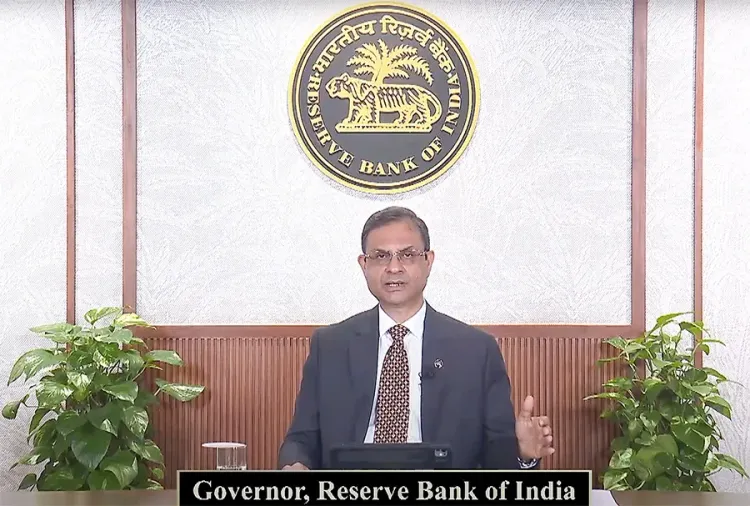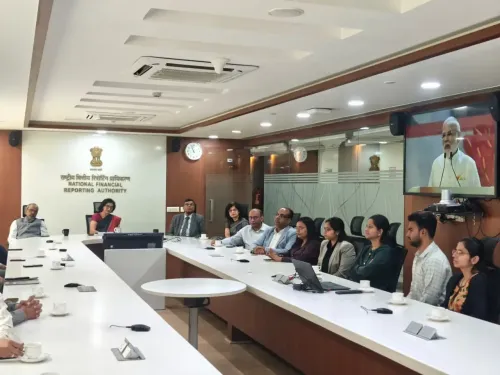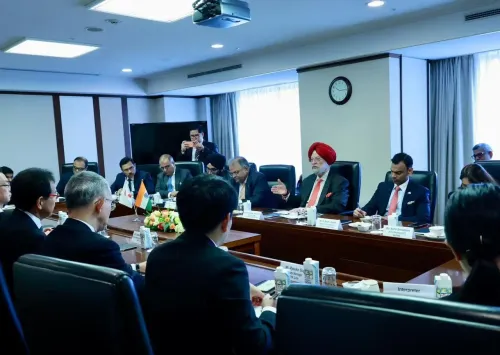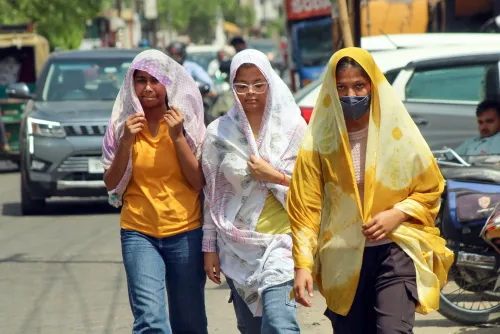Is More RBI Rate Cuts Possible This Year as Inflation Hits 98-Month Low?

Synopsis
Key Takeaways
- August inflation expected to surpass 2%, complicating potential rate cuts.
- India's CPI inflation fell to a 98-month low of 1.55% in July.
- Food inflation reached a 78-month low, contributing to overall decline.
- Core inflation decreased, with a notable drop below 4% for the first time in 6 months.
- Tariff impacts could pressurize revenue in key export-oriented sectors.
New Delhi, Aug 13 (NationPress) With the inflation rate for August projected to exceed 2 percent, approaching 2.3 percent, the likelihood of a rate reduction by the Reserve Bank of India (RBI) in October appears slim, as per SBI Research on Wednesday. Additionally, a rate cut in December seems unlikely when evaluating growth metrics for Q1 and Q2.
India’s CPI inflation fell to a significant low of 1.55 percent in July, marking a 98-month low compared to 2.10 percent in June and 3.60 percent in July 2024.
This July figure represents a ninth consecutive month of decline, primarily attributed to a drop in food inflation, which has also reached a 78-month low.
Food inflation decreased by 75 basis points in July compared to June 2025, with July's food inflation rate at an unprecedented low of -1.76 percent, the lowest since January 2019, when it was at -2.24 percent.
Core inflation saw a notable decline as well, falling below 4 percent for the first time in six months, settling at 3.94 percent. Excluding gold prices, core inflation dipped below 3 percent to 2.96 percent in July 2025, nearly 100 basis points lower than the overall core CPI, according to the report.
Furthermore, in Q1 FY26, approximately 2,500 listed companies in India reported a 5.4 percent increase in top-line growth, while EBIDTA rose by around 6 percent.
“In Q2, revenue and margin pressures may arise in export-focused sectors adversely affected by tariffs, including Textiles, Gems and Jewellery, Leathers, Chemicals, Agriculture, and Auto Components. The overall US CPI inflation (not seasonally adjusted) also exhibited a year-over-year growth of 2.7 percent in July, which is 40 basis points higher than the April figure, indicating the negative impact of tariffs,” the SBI report noted.
Since the RBI MPC opted to reduce rates in June and maintained status quo in August, the 10-year yield has begun to rise.
From around 6.30 percent in July, it has now surpassed the 6.45 percent mark. The bond yield may not stabilize until there is clarity regarding tariffs.
“In this context, we emphasize that the yield curve is a public good. In Indian markets, it is common to observe varying behaviors among debt market participants,” the report stated.
For instance, while one group of players aligns with the RBI's monetary policy stance, another group may act counter-cyclically, and sometimes both groups may react in opposition.
“However, following the announcement of the June policy, nearly all market participants are behaving similarly, which is surprising and leading to skewed price discovery despite inflation being at an eight-year low,” the report concluded.









